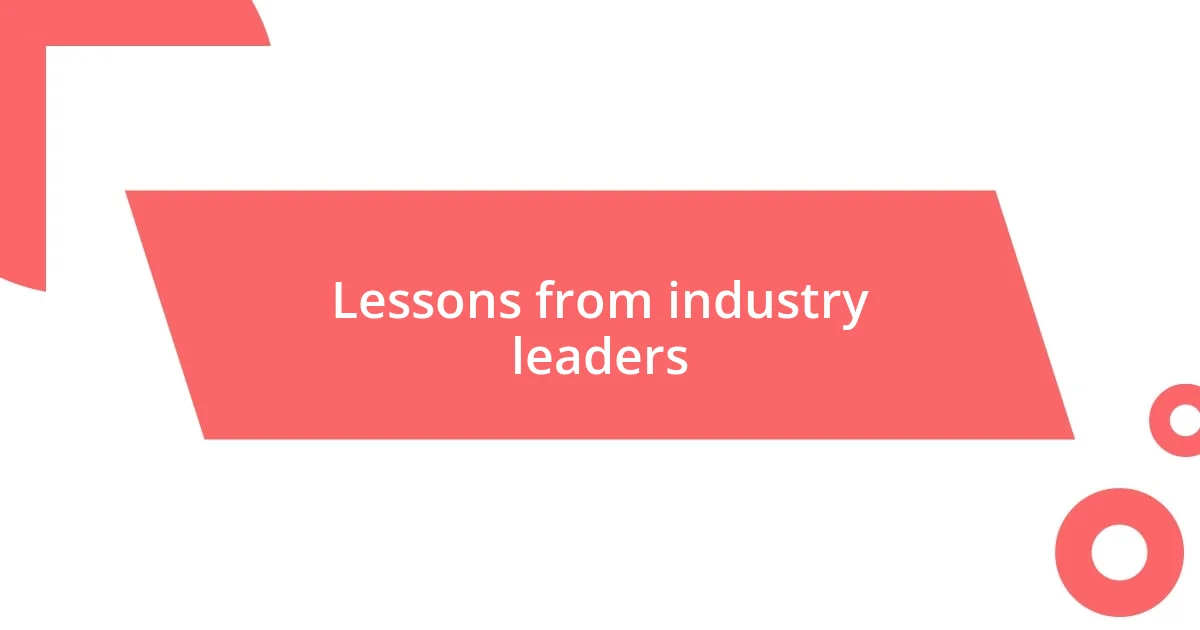Key takeaways:
- Effective communication and relationship-building with suppliers and stakeholders are crucial for smooth distribution operations.
- Leveraging technology and data analytics enhances inventory management, problem-solving, and overall efficiency.
- Measuring distribution success requires a balance of quantitative metrics, like sales volume, and qualitative insights, such as customer satisfaction and team feedback.

Understanding the distribution journey
Every step in the distribution journey has its own lessons and surprises. I remember the first time I coordinated a shipment; my heart raced as I navigated delays and unexpected costs. How many times do we find ourselves thinking, “What else could go wrong?” Embracing these moments not only taught me resilience but also shaped how I approach future challenges.
As I delved deeper into this journey, I realized that understanding the nuances in logistics is crucial. For instance, I learned how essential communication is when working with suppliers and retailers. Often, I found myself on late-night calls, negotiating terms or clarifying expectations. Did anyone else feel that anxiety of ensuring everything went smoothly, especially when dealing with multiple parties? Those moments underscored the importance of building relationships and trust in distribution.
Looking back, I see that my distribution journey was not just about the flow of goods; it was an exploration of problem-solving and adaptability. There were times I had to pivot quickly, like when an unexpected demand surge hit, catching my team off guard. I often wondered, “How can I prepare better for the unforeseen?” It was through these experiences that I developed a more proactive mindset, transforming challenges into opportunities for growth.

Key challenges in distribution
One of the most daunting challenges I’ve faced in distribution is managing inventory. There were moments when I had to watch stocks dwindle faster than anticipated, which put incredible pressure on my team and me. I remember frantic calls to suppliers, hoping I could secure restocks just in time. This taught me the importance of forecasting demand accurately—an art and science in itself. Having the right data and tools at my disposal changed the game, but it took time to get there.
Another significant hurdle was navigating logistical complexities. I once dealt with a tight deadline for a crucial shipment, only to find out that weather conditions had disrupted transport routes. The anxiety was palpable; I learned quickly that flexibility is key. Having contingency plans for such scenarios became non-negotiable for me. I now try to stay several steps ahead, mentally preparing for disruptions because they will inevitably occur.
Lastly, I found that aligning all stakeholders involved in the distribution process can be a challenge. I recall a time when miscommunications led to mixed signals, causing delays that rippled through the supply chain. This experience reinforced the need for clear communication channels. Each party must be on the same page—this creates smoother operations and builds a collaborative atmosphere that ultimately benefits everyone involved.
| Challenge | Impact |
|---|---|
| Inventory Management | Pressure to meet demand and potential revenue loss |
| Logistical Complexities | Disruptions that require quick thinking and adaptability |
| Stakeholder Alignment | Risk of miscommunication leading to delays |

Strategies for successful distribution
Establishing a solid distribution strategy is crucial for any successful operation. From my experience, I found that leveraging technology can streamline processes significantly. For instance, using a centralized inventory management system allowed me to keep tabs on stock levels in real-time. This not only reduced the frantic last-minute scrambles for restocks but also gave me a clearer picture of our buying trends. I remember the relief I felt when I could spend less time fretting about inventory and more on building relationships with suppliers.
Here are some key strategies I’ve employed:
– Invest in Technology: Adopt software solutions that offer visibility and manage logistics efficiently.
– Foster Strong Relationships: Make time to cultivate genuine connections with suppliers and partners; trust pays off in times of crisis.
– Create Contingency Plans: Always expect the unexpected—have a plan B (and C!) for logistics to minimize disruptions.
– Continuous Training: Regularly training your team on best practices can improve overall efficiency and adaptability.
– Analyze Data: Regularly review sales and inventory data to align production with demand and anticipate future needs.
Throughout my journey, I also learned the power of teamwork. I vividly recall a particularly stressful situation when a shipment was delayed just days before a major launch. Instead of panicking, I gathered the entire team in a brainstorming session. Everyone shared their insights, and together we devised a rapid response plan that not only rescheduled our shipping but also communicated effectively with our customers. That experience reinforced for me that having a cohesive team can turn potential disasters into opportunities for innovation and collaboration.

Lessons from industry leaders
Lessons from industry leaders can be incredibly insightful. One lesson that resonates with me is the significance of resilience. A mentor once shared a story about a product launch that didn’t go as planned. They faced an unexpected hurdle when a key supplier fell through at the last minute. Instead of giving up, they pivoted quickly, finding new suppliers and leveraging their existing relationships to turn the situation around. I learned that being adaptable and maintaining composure in the face of adversity can lead to unexpected successes.
Another important takeaway I’ve gathered is the value of mentorship. Reflecting on my own path, I realize how invaluable it was to have industry veterans share their experiences with me. I once attended a small workshop where an esteemed leader highlighted the benefits of learning from failures. Their honesty about missteps taught me that failure isn’t a dead end but rather a stepping stone for growth. This perspective not only shaped my approach to challenges but also encouraged me to embrace vulnerability within my team.
Lastly, I’ve come to appreciate the necessity of fostering a culture of open communication. I remember an instance where I overlooked gathering input from my team before making a significant decision regarding distribution changes. The pushback was overwhelming! This experience nudged me to understand that tapping into diverse perspectives can unveil new ideas and streamline operations. After all, how can we expect to innovate if we don’t encourage dialogue?

Tools for effective distribution
Leveraging the right tools has been pivotal in enhancing distribution efficiency for me. I often turn to project management software like Trello or Asana, which enables my team to track progress at a glance. I can’t express how satisfying it was to see our tasks organized in one place; it finally eliminated the chaos and guesswork that often plagued our project timelines.
Another game-changer has been utilizing communication platforms such as Slack. In one instance, a supplier issue arose, and instead of lengthy email chains, we resolved it in real time. This not only expedited our problem-solving process but also reinforced the importance of open lines of communication. Don’t you think it’s amazing how technology can transform what once seemed like insurmountable hurdles into manageable tasks?
Data analytics tools have also shaped my distribution decisions significantly. By regularly analyzing key performance indicators, I gained insights that helped us adjust inventory levels intelligently. I remember a particular month when I noticed a spike in demand for a specific product. Thanks to our data analysis practice, we were able to ramp up production just in time, preventing stockouts and ultimately increasing customer satisfaction. Isn’t it incredible how informed decisions can turn potential downturns into growth opportunities?

Measuring distribution success
Measuring distribution success often comes down to analyzing both quantitative and qualitative metrics. From my experience, sales volume and customer satisfaction ratings are two key indicators I keep a close eye on. There was a period when I noticed that while our sales were climbing, customer feedback suggested dissatisfaction with the delivery times. It struck me that success isn’t just about numbers; it’s also about understanding the customer’s experience.
I’ve also found that tracking delivery accuracy can be a significant measure of success. In one instance, we implemented a new tracking system that allowed us to monitor our shipping errors more effectively. The results were enlightening; we reduced mistakes by 25% in just a few months! I realized that focusing on the details, such as ensuring orders were fulfilled correctly, not only boosts efficiency but also builds customer trust—a crucial aspect of any successful distribution strategy.
Lastly, I can’t stress enough the importance of regular team feedback sessions in measuring our distribution success. One memorable meeting opened my eyes to issues I had overlooked, like the burden our processes put on our team members. This candid dialogue helped us regroup and innovate our systems, ultimately leading us to achieve our goals more swiftly. Have you ever considered how the voices of your team can shape success? Engaging with them has taught me that success is a shared journey, not just an individual accolade.















